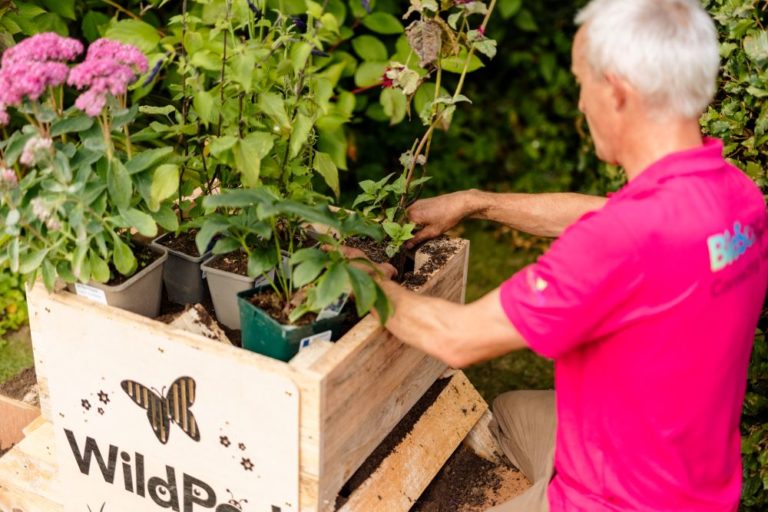Hearing news of habitat destruction and biodiversity loss in the UK, and across the globe, causes me concern that, despite calls for action over the past decades, we have continued blindly into this crisis. So, like many people I do what I can to reduce my environmental footprint – choosing organic, reducing meat consumption, trying to avoid plastic, reducing car use etc, and yet I can’t help but feel powerless in the face of such massive global pressures.
Thinking more positively, it is clear, that these small changes, made by many, many people are starting to influence bigger players and, from investment companies to government, decision makers are moving to reduce environmental impact and promote sustainability. Biodiversity collapse remains the biggest underlying threat to our survival on this planet, it is inextricably linked to the climate crisis for example, so if we all did a little for biodiversity, we could start to change things globally as well as getting some direct benefits.
Creating a wildlife space in your garden will add colour and vibrancy, a buzz, which will increase your chances of connecting with nature and all the many benefits that brings.
At BioScapes, many people ask us “How do I attract wildlife to my garden”, so here are a few wildlife tips for encouraging biodiversity at home and make your garden a haven for nature.
1. Beds for butterflies
Beds and borders are often the showpiece of a garden but sometimes the colour we create here can be poor for wildlife.
Some garden varieties may be colourful and showy but provide very little pollen or nectar for insect pollinators like bumblebees and butterflies.
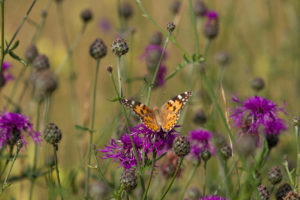
Lavender and rosemary provide lots of food for insects, and plants like buddleia are great for butterflies. Planting native wildflowers like meadow cranesbill or ox-eye-daisy is even better for wildlife as they will provide food for larvae like caterpillars.
It’s worth planting a wide range of different plants to provide variety in size, shape and growing season as this will attract different insects, and other creatures that feed on them. Different flower shapes are suited to different insects. The long, thin tubes of honeysuckle are great for butterflies and, releasing lots of scent at night, are also attractive to moths. Foxgloves are excellent for bees and will provide food for many months as a succession of flowers open on the tall flower stalk. Robust flowers with flat heads like daisies and wild carrots provide lots of pollen and a safe landing zone suitable for a whole range of insects including beetles.
In this way, adding diversity to your borders, can support a healthy ecosystem, providing homes for a wide range of species from butterflies to bugs and hoverflies to hedgehogs, bringing more wildlife to your garden.
2. De-composters
Creating a compost heap in your garden can be a wildlife-friendly use of garden and kitchen waste.
Not only will it reduce waste going to landfill, and provide you with rich compost for your plants, but it will also boost some of our most important creatures – soil organisms.
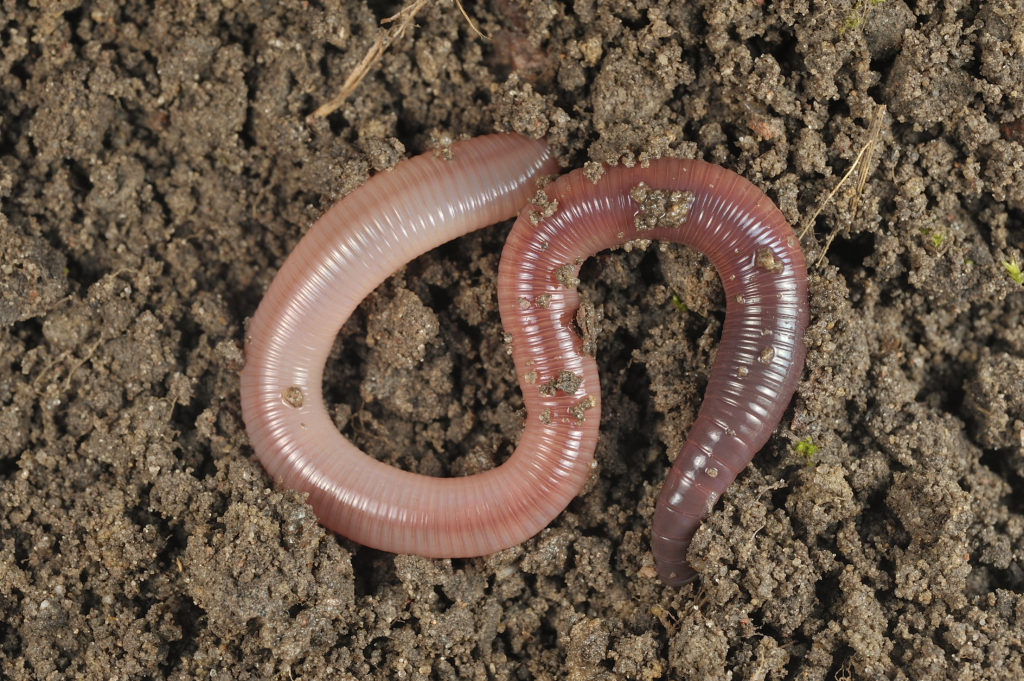
Worms are some of the most obvious creatures in our soils and do a fantastic job of recycling nutrients by dragging leaves underground and aerating the soil with their burrows. There is a whole host of soil organisms which are essential for healthy soils, from the big and noticeable, like worms and millipedes, to the miniature, like bacteria and amoebae.
But don’t underestimate these microscopic creatures as, working together, they play a vital role in supporting the whole ecosystem. In fact, there can be more microorganisms in a spoonful of soil than there are people on the planet.
The mass of food within a compost heap is a feast for these decomposers which work to get rid of unwanted vegetation and add nutrition back into the soil. In turn, they are an excellent source of food for other wildlife.
Spreading home-made compost on your garden will encourage worms wherever it spreads. It will also encourage other ground living creatures like centipedes and ground beetles which are valuable predators, helping to control garden pests.
Where possible, avoid using pesticides. As well as killing problem species they are also poisonous to other wildlife damaging the whole of the food chain.
3. Creatures of the night
They might not be visible but from foxes and hedgehogs to bats and moths, there could be lots of creatures exploring your neighbourhood during the darkest hours.
With over 2,500 types of moths in the UK they massively outnumber the day flying butterflies and are often just as colourful and beautiful. Encouraging a wide variety of native plants in your garden will provide food for lots of different moths. In turn, this will attract bats which will feed on them and other night flying insects including the much-maligned mosquitos.
You can also help bats by reducing artificial lighting around your property as this interferes with the bat’s flying skills and ability to hunt.
Hedgehogs are mostly night-time visitors that keep the garden ecosystem in balance by eating slugs and snails. Work with with your neighbours to create a hedgehog corridor – a gap in garden-dividing fences and walls – to help them hunt through different gardens and avoid busy roads. Increasing numbers of these corridors, alongside hedgehog hotels, have played an important role in slowing the staggering reduction of hedgehogs in our urban areas – whilst hedgehogs in rural areas remain in steep decline. Homes and holes are not enough though, so it is essential that we also provide good feeding areas. The hedgehog habitat in a garden would be a mix of bio-diverse borders, veg patches free from pesticides, wild areas and shrubby patches.
4. Just add water
From bird baths to ponds, even a little bit of water in your garden can make a big difference for wildlife. Adding a small pond to your garden is a great way to attract amphibians like frogs and newts and may even attract dragonflies to hawk over the water in the summer.
Ponds don’t have to be big. An upturned shallow dish could provide a valuable bathing site for birds, and you could even create a hoverfly lagoon from an old milk carton. Filled with leaves and other organic material this will create a wonderful home for insects like hoverflies, many of which are excellent pollinators.
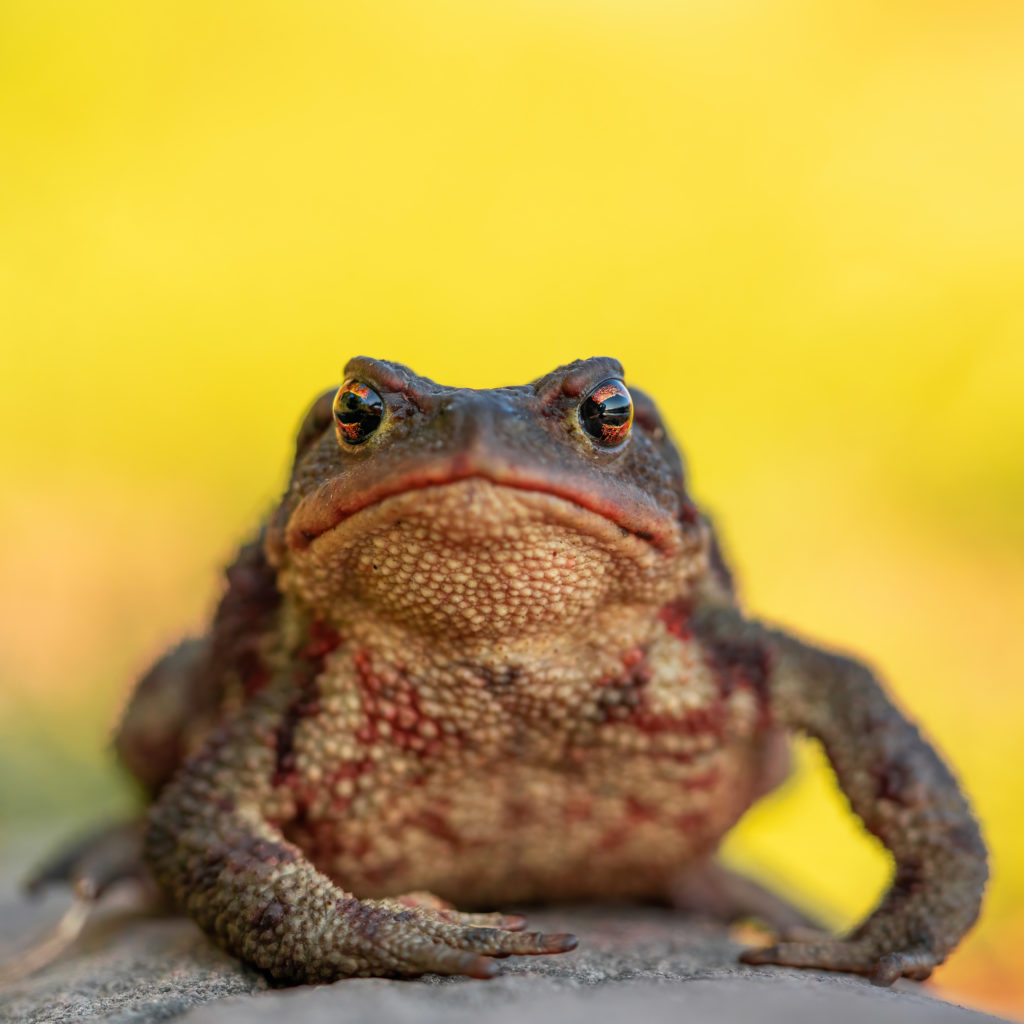
We have incorporated a rot hole (hoverfly lagoon) into WildPod and NatureArk as a way of encouraging a wider diversity of creatures which rely on these special places for their young.
Our BioCube includes a multi-purpose planter which can easily be utilised as a base for a pond. We’ve been surprised with how quickly wildlife have used the pond with bugs and beetles moving in straight away and soon followed by a toad and great crested newt!
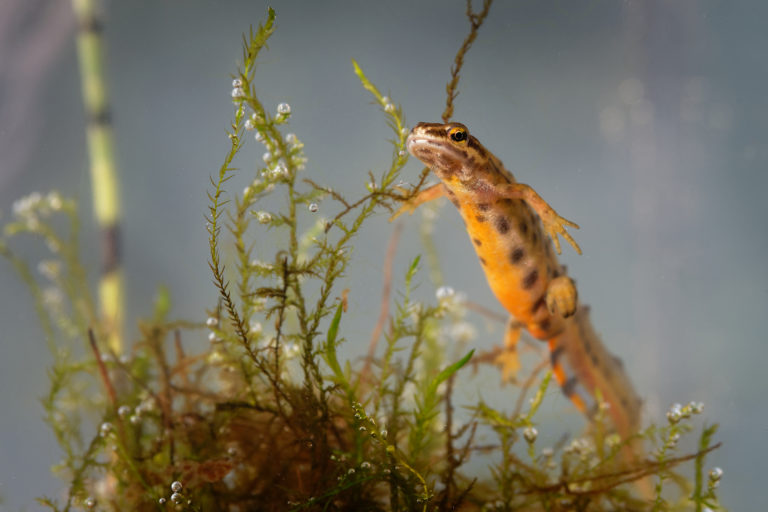
5. Wonderful woodpiles
Some animals, such as butterflies, toads and newts, use woodpiles as a place to hide and to hibernate through the colder months. Like compost heaps they are also excellent for decomposers like millipedes and woodlice and so provide great feeding areas for hedgehogs and some birds.
Insect hotels are inspired by natural log pile habitats with a multitude of gaps, cracks and hollows which provide different sized refuges for many different creatures and an abundance of different food types which form the basis of the food chain and a healthy ecosystem.
Larger logs with the bark still attached work best for woodpiles but branches and twigs of any size can be added. It’s also a great place to add autumn leaves as they will provide extra food for invertebrates and could be used as bedding by a resident hedgehog. Ideally, log piles should be placed in an area of partial shade so that they remain damp and don’t become too dry.
Log piles and dead wood are such an important component of a healthy ecosystem that we have incorporated a dead wood zone within all our habitat units. This habitat may not be as colourful and fragrant as the wildflower planting area but, with close connection to the soils and surroundings it will become full of invertebrates and gradually break down providing nutrition for the plants above.
6. Encourage your wild side
Gardens should be places where we can relax and replenish our energies and there is lots of evidence which shows that connecting with the natural world boosts our immune systems and feeling of wellbeing.
Connecting with nature also speeds up recovery from illness and increases our capacity to learn.

With increased awareness of rewilding many people are finding new ways to rewild gardens and bring a touch of wilderness into their own space. At BioScapes we believe that rewilding is not just about bison and wolves in expansive landscapes, it is also about bringing wild experiences close to our homes – perhaps in smaller, more intimate spaces with sometimes amazing behaviour and dramatic interactions between species. So, creating space for wildlife, helps us to reconnect with our wilder selves and receive many more benefits in return.
One of the simplest ways to encourage more wildlife to your garden is to leave an area unmanaged, to grow wild. Join in with ‘No Mow May’ and you may be surprised by the native wildflowers which spring up from your lawn. These can provide a vital food source for pollinators like bees, hoverflies and beetles.
7. Bee friendly
Unlike the familiar bumblebees and honeybee, most of our bees do not make large colonies with one egg-laying queen but are actually solitary. The female will search for a suitable nesting site like a hole in dry ground or old beetle holes or hollow stems in which to lay their eggs. She will often then build a series of chambers or cells which she fills with pollen and nectar before laying a single egg in each. These solitary bees are excellent pollinators and provide a great service to gardeners and farmers.
A bundle of hollow stems tied together is one of the simplest bee habitats for your garden. Placed in a sunny area these often attract red mason bees and you will soon spot if they are in use when the holes are plugged with dried mud. Do take care when buying a bee house or bee hotel as although some might look the part, with bright colours and fancy designs, many are less suitable for solitary bees due to the short length of the tunnels.
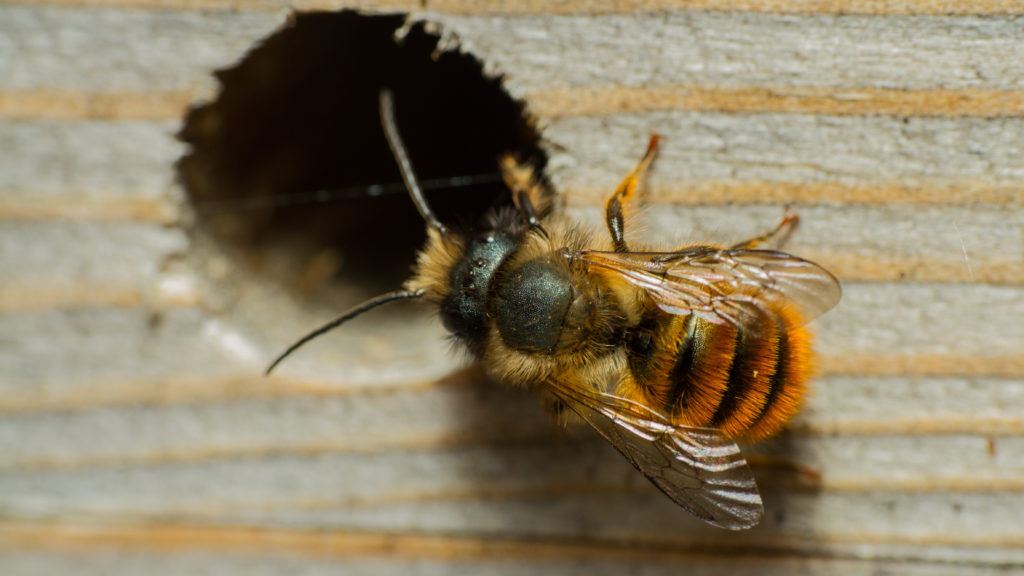
8. Bug Hotel
With thousands of invertebrates in a standard garden very few cause damage to our favourite plants, the rest carry out many other essential services from pollination to decomposing. Many more help to control garden pests.
Bug hotels attempt to create a mixture of holes, hollows and food supplies which, in turn, tempt a wide diversity of invertebrates like millipedes and woodlice, earwigs, true bugs and beetles. These bug houses try to recreate a snag or tangle of branches and logs which would naturally be more common if not actively removed as we tidy our gardens and countryside. The classic bug house or hotel found in many schools and gardens uses a stack of old pallets to create the superstructure which is then filled variously with bricks, pots, branches and leaves to provide high-rise living for bugs and beasties.
9. Living in a box
As our countryside and gardens become tidier and our buildings are more highly maintained, birds, bats, hedgehogs and other wildlife find it much more difficult to find suitable nesting sites. Placing artificial nesting sites on our homes, in trees and hedges, and on the ground will provide homes where these species can find refuge and bring up their young.
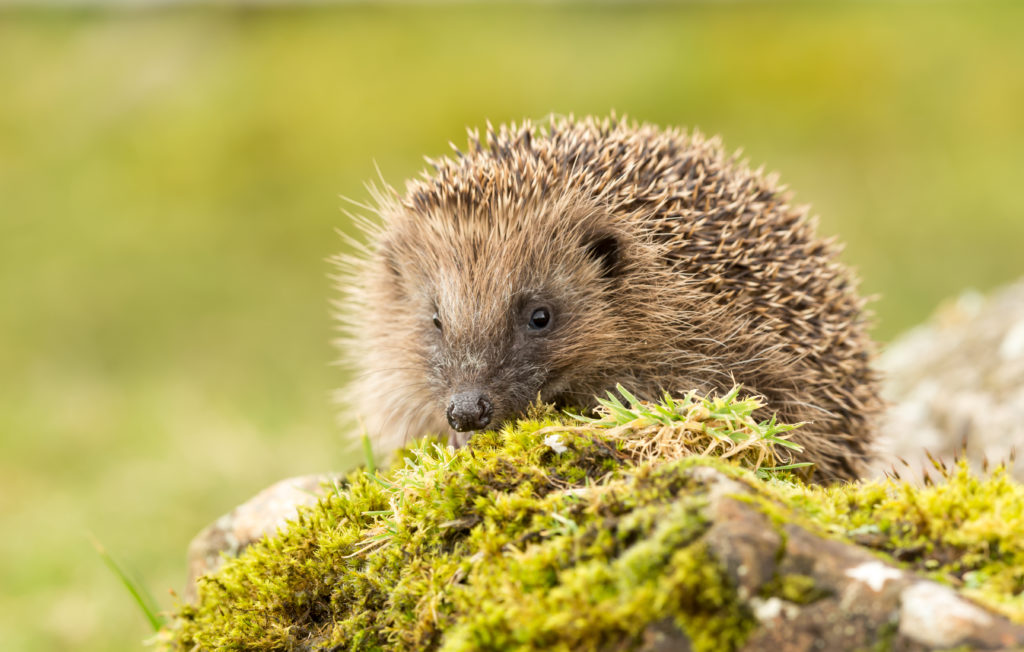
There is a vast selection of nesting boxes available, hoping to cater for many types of birds, bats hedgehogs and various insects. There are also many options for colour, and design from traditional nest box house shapes to flamboyant displays or those which are hidden within a wall. It is important to select the right nesting box for your garden and to make sure it is suitable for the species you want to encourage. For a greater chance of success choose a box for animals you already see in your garden and make sure it comes from a reputable suppler.
The UK is home to 18 species of bat, the largest being the noctule which weighs the same as four £1 coins, and the smallest is the pipistrelle, which weighs as little as a 2p coin. Bats will often select nest boxes places on more sunny positions so that they can stay warm during the day, but it is important to place several bat boxes close together but in different aspects so they can select a cooler roost at hotter times.
10. Provide a WildPod, NatureArk or BioCube
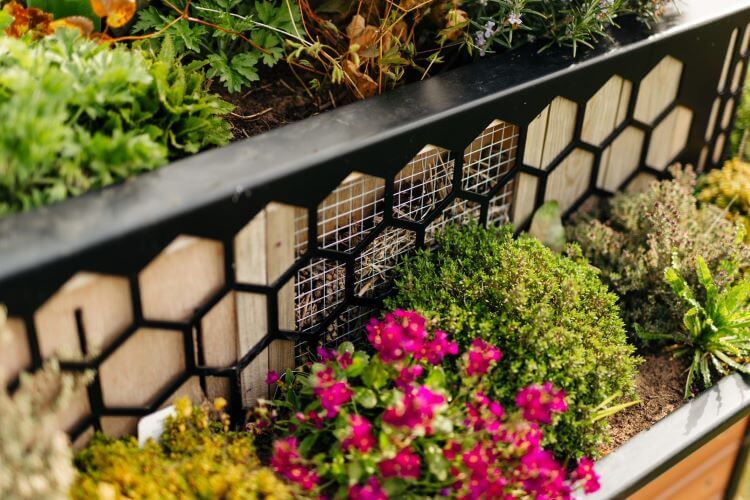
BioScapes have created products that bring a range of wildlife homes under one roof. With homes for hedgehogs, amphibians, bees and butterflies these integrated habitat units can quickly create a diverse ecosystem in your garden. The units come in a range of sizes and being easy to install and maintain, are suited to any garden, whatever the space or design. Made from untreated timber or recycled plastic and coated steel they are attractive in their own right and, with an integrated planter, can grow a mix of herbs, wildflowers or even veggies to bring your garden to life.
Keep an eye on our website as over the coming months we’ll be adding more wildlife advice – helping you to encourage more wildlife to your patch, from bees, bugs and butterflies to frogs and hedgehogs.
Author: Terry Smithson BSc in Zoology, MSc in Ecology
Terry is our in-house ecologist. He’s worked in the nature conservation sector for over 25 years and loves all things wildlife, especially hoverflies, beetles, mammals and birds. He’s helped design our BioScapes products so they maximise the recovery of wildlife and he’s happy to offer advice to individuals, schools and businesses on how to boost biodiversity.

